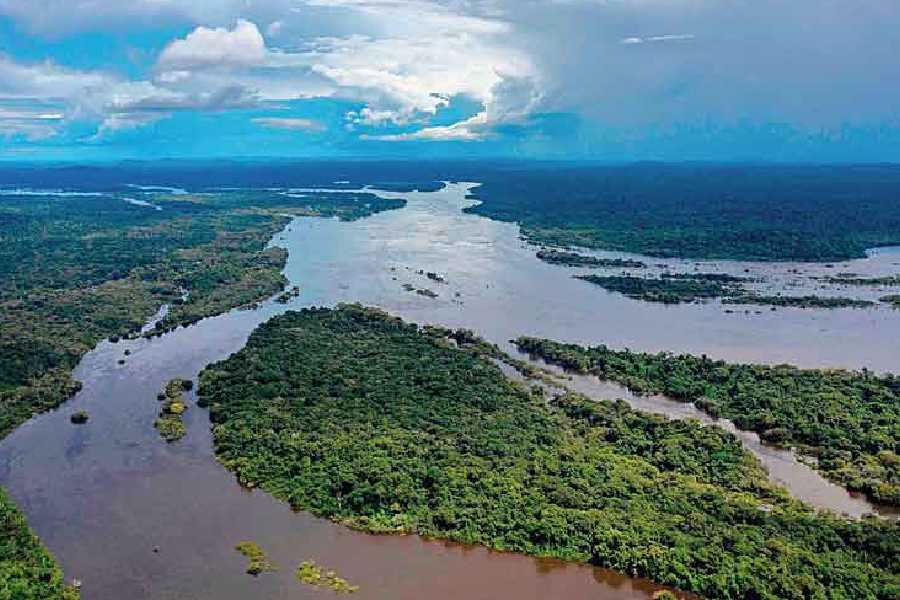Prometheus had brought to humanity the gift of fire, a beacon that led humans out of darkness and towards civilisation. The billionaire, Elon Musk, is no Prometheus but he has delivered high-speed internet to the Marubo people in a remote indigenous village in one of the most isolated stretches of the planet inside the Amazon rainforest. This 2,000-member tribe is one of hundreds across Brazil that can access the internet with Starlink, the satellite internet service from Space X. Since it entered Brazil in 2022, Starlink has ensnared swathes of the world’s largest rainforest into the net, as it were, helping the internet conquer perhaps its final frontier on the planet.
While most of the world has had decades to grapple with the repercussions of the internet, indigenous groups, like those living in the Amazon, are playing catch-up to combat screen distractions and digital misinformation while also savouring the fruits brought by digital connectivity. For instance, some Marubo youth have become so enamoured by the world wide web that they are ignoring traditional rituals like hunting, gathering, craftwork and other activities that are integral to the Marubo way of life and, more importantly, crucial for their survival. So the tribal elders have had to do what modern parents, even governments, resort to: limit access to the internet — among the Marubo, it is available for two hours in the morning, five hours in the evening, and on Sundays. But the internet has also been enabling as a tool, helping isolated tribes call for help in an emergency besides connecting them to education and job opportunities. It further allows indigenous leaders to coordinate among villages and alert the authorities about health issues and environmental destruction.
Fire, while useful, can also singe. The internet has thus become a weapon for Brazil’s illegal miners for coordinating logistics, receiving advance warning of law enforcement raids, and making payments without flying back to the city: Starlink terminals have been found at most illegal mining spots in recent times. But fire can also be fought with fire. The Paiter tribe in the Amazon, for instance, has been using the internet and Google Earth to battle illegal miners and loggers. What is more, they have been using their phones to keep track of the number of wild animals they hunt to ensure that such killing is sustainable. The Paiter people are not alone in this. Some native tribes in the United States of America which received internet connectivity during the pandemic have been using it not only to access knowledge but also to spread awareness about their customs and culture.
Bringing fire is not enough: people need to be taught to wield the flames. Has the internet been rolled out to the Amazonian tribes too quickly, without adequate training or deliberations on its dangers? The Marubo had wanted the internet to tell the world their story. Instead, they have become the story — recently, there were false reports of the tribe becoming addicted to pornography leading the tribe and the New York Times to offer clarifications. There is, evidently, no going back to a world without fire, nor the internet.











